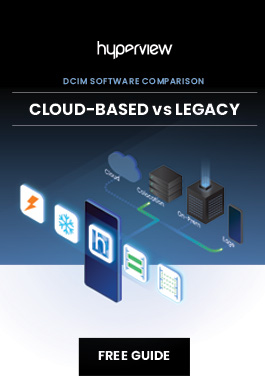Modular, Scalable Data Centers Deliver Utmost Efficiency and Flexibility
In today’s fast-paced digital landscape, businesses and organizations face an ever-increasing demand for data storage and processing capabilities. As a result, data center operators must constantly adapt to meet these changing requirements, while also managing costs and minimizing their environmental impact.
One solution to this challenge lies in embracing modular and scalable data center design. Let’s explore the benefits of this approach and how it enables data centers to become more cost-effective and resource-efficient, while also offering the flexibility needed to keep pace with evolving demands.
The Modular and Scalable Data Center Design Approach
According to a report by MarketsandMarkets, the global modular data center market was expected to grow from USD 18.4 billion in 2020 to USD 37.8 billion by 2025, at a 15.4% CAGR. The primary drivers of this growth are the increasing demand for scalable and cost-effective data center solutions, the need for rapid data center deployment, and the desire to reduce the environmental impact of data centers.
Modular and scalable data center design involves building a facility with the ability to easily expand and adapt to changing requirements. This is achieved by incorporating prefabricated, standardized components, which can be easily assembled, disassembled, and reconfigured to create a customized solution. The modular approach allows for seamless capacity expansion, while the scalable design enables data centers to grow or shrink as needed, ensuring that resources are used efficiently. As a result, modular data centers are being embraced across various industries, including IT and telecom, banking, financial services and insurance (BFSI), healthcare, retail, and government. These sectors are increasingly turning to modular data centers to address their expanding data storage and processing requirements.
Benefits of Modular and Scalable Data Center Design
- Cost-Effectiveness: By utilizing standardized components, modular data centers can reduce overall construction costs, as well as the time required to design and build the facility. This approach also allows for a more accurate estimation of project costs, reducing the risk of budget overruns.
- Resource Efficiency: Scalable design enables data centers to more closely match their infrastructure capacity to the actual demand, minimizing resource waste and reducing energy consumption. This not only results in cost savings but also helps to minimize the facility’s environmental impact.
- Flexibility: The ability to easily expand or reconfigure the data center’s infrastructure enables operators to quickly adapt to changing requirements, ensuring that they can keep pace with evolving technology and customer demands.
- Reduced Downtime: With a modular and scalable design, data center operators can easily add or replace components without causing significant disruption to existing operations. This not only minimizes downtime but also helps to maintain high levels of service availability.
- Rapid Deployment: The use of standardized, prefabricated components enables faster construction and deployment of data center facilities. This can be particularly advantageous in situations where rapid capacity expansion is required to meet sudden increases in demand.
Conclusion
As the digital landscape continues to evolve and the demand for data storage and processing capabilities grows, the need for flexible and efficient data center solutions becomes ever more critical. By embracing a scalable design approach, prefabricated modular data centers can not only reduce costs and improve resource efficiency but also ensure that they are better equipped to meet the changing needs of their customers. Ultimately, this innovative approach represents the future of data center design and offers a path toward greater sustainability, flexibility, and adaptability in an increasingly data-driven world.
Maximize efficiency and cost-savings with cloud-based DCIM. Schedule a free one-on-one demo of Hyperview today.
If you would like to learn more about the difference between SaaS and on-premises DCIM softwares, download this free guide.

The post Modular, Scalable Data Centers Deliver Utmost Efficiency and Flexibility appeared first on Hyperview.
*** This is a Security Bloggers Network syndicated blog from Hyperview authored by Rajan Sodhi. Read the original post at: https://www.hyperviewhq.com/blog/modular-scalable-data-centers-deliver-utmost-efficiency-and-flexibility/





